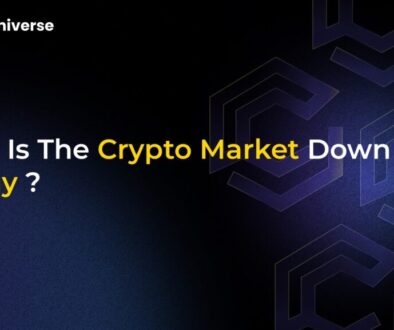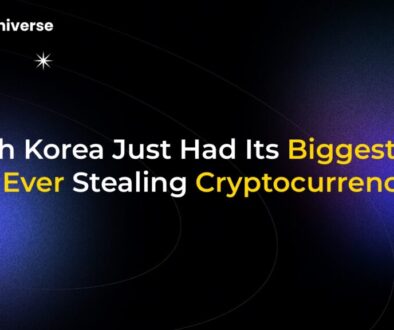Cryptocurrency Hype vs Hard Truths: Risks, Regulation & the Future of Digital Money

Turn on your screen, scroll through social media, and you’ll find it: stories of overnight millionaires, tweets promising the next 100x coin, and a vision of a decentralized utopia where traditional finance is a relic of the past. The world of cryptocurrency is electric with hype, drawing in millions with the promise of fortune and freedom. But behind the dazzling glow of the hype train lies a complex and often harsh reality.
To truly understand this revolutionary technology, we must look beyond the noise. It’s time to dissect the Cryptocurrency Hype vs Hard Truths, exploring the very real Risks, Regulation & the Future of Digital Money. This isn’t about dismissing the potential of crypto, but about arming yourself with the knowledge to navigate its volatile landscape wisely.
The Seductive Allure of Crypto Hype
The cryptocurrency hype machine is a powerful force. It’s fueled by a potent cocktail of factors:
- FOMO (Fear of Missing Out): News of Bitcoin’s meteoric rise and stories of early investors becoming fantastically wealthy create a powerful urge to jump in, lest you miss the next big opportunity.
- Social Media Influencers: A legion of “crypto gurus” on platforms like X (formerly Twitter), YouTube, and TikTok promote specific coins and projects, often without disclosing they are paid to do so.
- The Promise of a New Internet: Buzzwords like Web3, decentralization, and the metaverse paint a picture of a future where power is taken from big tech and given back to the users, with crypto as the key.
This narrative is incredibly appealing, but it often glosses over the fundamental complexities and dangers. The hard truths are far less glamorous but infinitely more important for anyone considering entering the market.
The Hard Truths: Reality Bites Back
Hype: “Crypto is a guaranteed path to wealth.”
Hard Truth: Extreme volatility is the name of the game. For every story of a 100x gain, there are countless untold stories of devastating losses. Cryptocurrency prices can swing dramatically—sometimes by double-digit percentages in a single day—based on a single tweet, a regulatory rumor, or a shift in market sentiment. This is not a stable investment; it is a high-risk speculative asset class. Wealth can be wiped out just as quickly as it is created.
Hype: “It’s totally anonymous and private.”
Hard Truth: Most blockchains are pseudonymous, not anonymous. While your real name isn’t attached to your wallet address, every single transaction on public blockchains like Bitcoin and Ethereum is recorded on an immutable public ledger. Anyone can view these transactions. With advanced analytics, it’s often possible for law enforcement and blockchain analysis firms to trace transactions and link wallet addresses to real-world identities, especially when funds are moved to a centralized exchange that requires ID verification.
Hype: “Decentralization means no one is in control.”
Hard Truth: Pockets of centralization hold significant power. While the networks themselves are decentralized, the ecosystem built around them is not. A small number of large-scale mining operations can control a significant portion of a network’s processing power. Centralized exchanges (like Binance or Coinbase) act as gatekeepers for a majority of users. Furthermore, a few wealthy individuals, known as “whales,” hold enough of a specific cryptocurrency to manipulate its price with a single large trade.
Navigating the Minefield: Key Cryptocurrency You Can’t Ignore
Understanding the risks is non-negotiable. Before you invest a single dollar, be acutely aware of the following:
- Market Risk: As mentioned, extreme price volatility is the most significant risk. The market is driven by speculation, and prices can plummet without warning.
- Security Risk: The crypto world is a prime target for hackers. This includes large-scale hacks of exchanges where billions have been stolen, as well as individual phishing scams, malware, and fraudulent projects (or “rug pulls”). Remember the golden rule: “Not your keys, not your coins.” If you don’t control your private keys, you don’t truly own your crypto.
- Regulatory Risk: Governments around the world are still deciding how to handle cryptocurrencies. A sudden ban, a new tax law, or a crackdown on exchanges in a major country can send shockwaves through the entire market, causing prices to crash.
- Technological Risk: The technology is still new. Bugs in a smart contract’s code can be exploited, leading to catastrophic losses. Networks can face scalability issues, leading to high fees and slow transaction times.
The Watchful Eye: The Inevitable Rise of
The days of crypto being a lawless “Wild West” are numbered. Regulators globally are stepping in, and for good reason. Their primary goals are to:
- Protect consumers from fraud and market manipulation.
- Prevent money laundering (AML) and the financing of terrorism (CFT).
- Ensure financial stability and mitigate risks to the broader economy.
We are seeing a global push for stricter Know-Your-Customer (KYC) rules on exchanges, new guidelines for stablecoins to ensure they are properly backed, and clarification on how crypto assets should be taxed. While some fear that regulation will stifle innovation, many believe it’s a necessary step for mainstream adoption, as it can bring legitimacy and security to the space.
Beyond the Hype: The Real
So, if you strip away the hype and acknowledge the risks, what’s left? The answer is a revolutionary technology with the potential to reshape more than just our wallets.
The true innovation isn’t just a digital coin; it’s the underlying blockchain technology—a secure, transparent, and decentralized way of recording information.
The future of digital money is likely to be a hybrid one:
- Blockchain Beyond Currency: The technology is being explored for supply chain management, secure voting systems, digital identity verification, and creating transparent ownership records for everything from art (NFTs) to real estate.
- Central Bank Digital Currencies (CBDCs): Many governments are developing their own digital currencies. Unlike decentralized cryptocurrencies like Bitcoin, a CBDC would be issued and controlled by a central bank, offering the efficiency of digital transactions with the stability of a state-backed currency.
- A Coexistent Ecosystem: The future probably isn’t one system winning out over the other. Instead, we may see a world where traditional finance, decentralized finance (DeFi), and CBDCs coexist, each serving different purposes and connected by technological bridges like stablecoins.
Conclusion: Think Critically, Proceed Cautiously
Cryptocurrency is one of the most exciting and disruptive technologies of our time. Its potential is undeniable. However, the path forward is paved with both incredible opportunity and significant peril. The key is to approach it not with blind faith fueled by hype, but with a healthy dose of skepticism and a commitment to education.
Understand the technology, research every project thoroughly, be brutally honest about the risks, and never invest more than you are willing to lose. The story of digital money is still being written, and by separating the hype from the hard truths, you can make informed decisions about your place in it.


